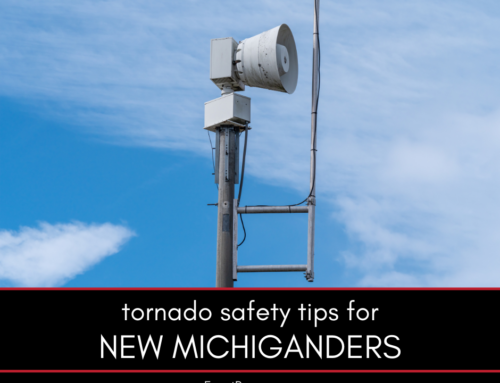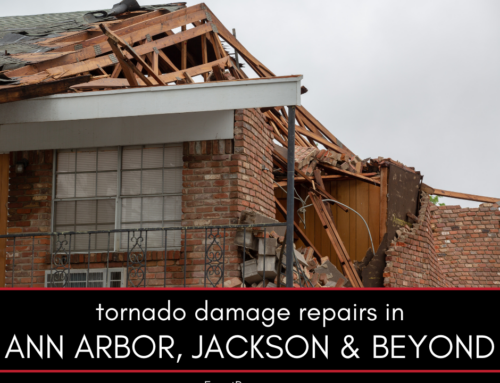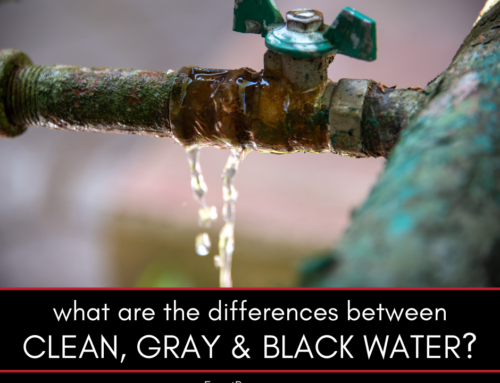A sewage backup is a serious problem that can cause extensive property damage and pose health risks. When wastewater from drains or toilets flows back into your home, it’s often due to blockages or overwhelmed municipal systems. Knowing how to handle sewage backups quickly and safely is essential for minimizing damage and protecting your family’s health.
How to Deal With Sewage Backups
Sewage backups can occur unexpectedly and often require immediate action. If you experience one, it’s crucial to respond quickly to prevent damage and contamination. This guide explains the following:
- Understanding common causes of sewage backups
- Staying safe during a sewage backup
- Managing the cleanup process
- Knowing when to seek professional help
- Preventing future sewage backups
Here’s a closer look at each.
Understanding Common Causes of Sewage Backups
Sewage backups happen for various reasons, from blockages in your home’s pipes to issues in the municipal sewer system. Common causes include tree roots infiltrating pipes, clogs from improper disposal of items, or heavy rain overwhelming sewer systems. Other factors, like aging infrastructure and ground movement, can also contribute to pipe damage, leading to blockages or backups.
Knowing these causes can help you recognize potential risks and avoid contributing to clogs. For example, flushing non-biodegradable items like wipes or sanitary products can block pipes, while pouring grease down the drain can cause buildup over time. Being mindful of what goes down your drains and monitoring any slow drainage can reduce the chances of a backup.
Staying Safe During a Sewage Backup
A sewage backup presents health hazards, as it exposes your home to harmful bacteria and contaminants. Staying safe should be your first priority. Avoid direct contact with sewage water, as it may contain pathogens that can cause serious infections. If you must enter the affected area, wear protective gear, including rubber gloves, boots, and a face mask, to limit exposure.
Shut off your home’s water supply to prevent further sewage flow, and turn off electricity in the affected areas to avoid electrical hazards. Keep children and pets away from the contaminated area to minimize the risk of spreading bacteria throughout your home. If you experience a significant backup, it’s often safer to leave the area and call a professional to handle the cleanup.
Managing the Cleanup Process
Cleaning up after a sewage backup requires thorough disinfection and proper disposal of contaminated materials. Start by removing any standing water, using a wet/dry vacuum if possible. Dispose of any items that have come into contact with the sewage, as they may be too contaminated to salvage.
Next, scrub all affected surfaces with hot water and a heavy-duty cleaner to eliminate bacteria. Bleach solutions or disinfectants are effective for killing pathogens on hard surfaces, but be sure to ventilate the area while cleaning to avoid inhaling fumes. Allow surfaces to dry completely, as lingering moisture can encourage mold growth.
For soft surfaces like carpets and upholstery, it’s usually best to remove and dispose of them if they’ve been exposed to sewage water. Mold and bacteria can settle deep within fibers, making thorough cleaning challenging. If the backup is minor and contained, washing contaminated items with hot water and detergent can sometimes remove bacteria effectively, but be cautious about reusing items that may still harbor pathogens.
The Environmental Protection Agency provides resources on safe sewage cleanup practices, including how to protect yourself from contaminants and dispose of hazardous waste properly.
Knowing When to Seek Professional Help
While minor sewage backups may be manageable, larger or repeated backups often require professional assistance. Restoration and sewage cleanup professionals have specialized equipment and expertise for handling extensive contamination safely and efficiently. If the sewage backup extends beyond a single room or if raw sewage has infiltrated your HVAC system, it’s best to call in professionals to prevent further damage and contamination.
Professionals also have access to industrial-grade disinfectants and drying equipment, which help ensure that your home is thoroughly sanitized and that moisture levels are controlled. If you’re unsure about handling a sewage backup on your own, err on the side of caution and contact a cleanup specialist to assess the damage.
Preventing Future Sewage Backups
Preventing sewage backups begins with proper maintenance of your home’s plumbing and sewer systems. Regularly cleaning drains and using enzyme-based cleaners can help prevent buildup that may lead to clogs. Avoid flushing non-biodegradable items, pouring grease down the drain, or overloading your garbage disposal with fibrous materials, as these can contribute to blockages.
Tree roots are a common cause of pipe blockages, so if you have large trees near your sewer lines, consider having a plumber inspect the pipes for root intrusion. In high-risk areas prone to flooding or backups, installing a backwater prevention valve can stop wastewater from flowing back into your home.
During heavy rainstorms, limit your water use to reduce the load on municipal sewer systems. Simple habits like postponing laundry or long showers during a storm can make a difference in areas where sewers are more likely to overflow. Taking these preventative steps can help minimize the risk of experiencing a sewage backup.
FAQ About Sewage Backups
Check out these commonly asked questions about sewage backups. If you don’t see your question here, please call our office and we’ll find you the answers you need.
What Should I Do First When I Notice a Sewage Backup?
The first step is to stop using water in your home to prevent further sewage flow. Shut off the main water supply if needed, and avoid contact with the sewage until you can assess the extent of the backup.
Can I Use Regular Cleaning Products for Sewage Cleanup?
You can use household disinfectants and bleach for hard surfaces, but ensure thorough cleaning to kill bacteria effectively. Avoid using standard cleaners on soft surfaces, as they may not eliminate contaminants completely.
Should I Remove Carpeting After a Sewage Backup?
Yes, it’s usually best to remove carpeting if it has been exposed to sewage water, as bacteria and mold can settle into the fibers. If disposal is not possible, consult a professional for specialized cleaning.
How Can I Prevent Sewage Backups in the Future?
Prevent backups by avoiding flushing items like wipes or grease down the drain, using enzyme-based drain cleaners, and installing a backwater valve if your home is at risk. Regular inspections by a plumber can also help detect potential issues early.
Is Sewage Backup Covered by Homeowners Insurance?
Some insurance policies may cover sewage backups, but coverage varies. Check with your insurance provider to understand your policy and consider adding sewer backup coverage if it’s available.
Do You Need a Disaster Remediation Expert in Washtenaw County or Jackson County?
If your home has already been damaged, we can help. Check out our services and call Exact Recon for your free disaster remediation quote today. We offer:
- Water damage restoration
- Fire damage restoration
- Mold removal and remediation
- Fire and smoke restoration
- Sewer cleanup and disinfecting
- Reconstruction
- Wind and storm damage repair










